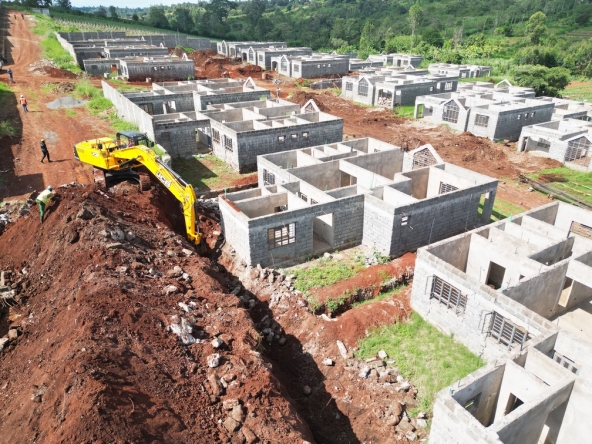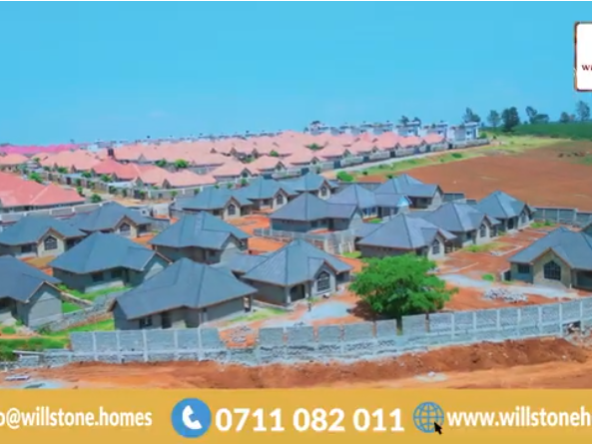For decades, the gold standard of affluent living in Kenya has had two iconic addresses: Karen and Kitisuru. These leafy suburbs in Nairobi have long stood as the epitome of elegance, prestige, and exclusivity. But now, in a quieter, less flashy evolution, a new luxury narrative is emerging — this time, in the cooler, greener hills just north of the city.
Welcome to luxury real estate Limuru Tigoni, where developers, investors, and discerning buyers are quietly shifting their attention. Less congested, ecologically rich, and increasingly well-connected, Limuru and Tigoni are fast becoming the new frontier for high-end living — and the reasons go far beyond aesthetics.
The New Allure of Limuru and Tigoni
At first glance, the shift may seem surprising. Karen and Kitisuru still boast top schools, embassies, high-security homes, and old-money charm. So why are high-net-worth Kenyans and expatriate developers increasingly drawn to Tigoni and Limuru?
The answer lies in a perfect storm of evolving buyer preferences, infrastructure developments, and climatic advantages.
1. Cool, Clean Air — A Climate Premium
Unlike Nairobi’s increasingly dusty, hot, and polluted lowlands, Tigoni real estate boom is fueled by its temperate highland microclimate.
At over 2,300 meters above sea level, Tigoni enjoys cool mornings, lush tea fields, and misty evenings — a sensory antidote to urban fatigue.
Health-conscious buyers, particularly post-COVID, are prioritizing air quality, outdoor space, and proximity to nature — all things these highland towns deliver in abundance.
2. Traffic Fatigue and Urban Sprawl
Nairobi’s western suburbs have become increasingly gridlocked, especially during rush hours along Ngong Road, Waiyaki Way, and the Southern Bypass.
In contrast, Limuru gated communities benefit from proximity to new road networks like the Western Bypass and James Gichuru-Rironi expansion, which connect directly to the CBD and Westlands.
Wealthy buyers are choosing shorter, more predictable commutes to Gigiri and Upper Hill — and Limuru offers just that, without sacrificing serenity.
Read Also: Solar-First Estates: How Power Unreliability Is Creating New Solar Gated Community Models
Big Players Are Betting on It
Several notable developers are anchoring this migration:
- Tilisi Views, located along Limuru Road, is one of the region’s largest planned communities, offering residential, commercial, and logistics zones — and pitching itself as the “next Karen” in terms of master planning.
- Brackenhurst Eco Estates in Tigoni targets buyers looking for luxury homes Tigoni with strong environmental credentials, including permaculture designs and rainwater harvesting.
- Ndume Gardens and several boutique developers are creating 1 to 5-acre luxury plots, marketed as countryside retreats within commuting range of Nairobi.
These projects are deliberately avoiding the density of Nairobi’s suburbs and instead emphasizing spacious homes, green belts, and sustainable design — appealing to both returning diaspora and younger elite professionals.
Karen vs. Limuru Estates: A New Comparison
| Feature | Karen/Kitisuru | Limuru/Tigoni |
|---|---|---|
| Price per acre (2024 avg.) | KES 120M+ | KES 25–45M |
| Altitude | ~1,800m | ~2,300m |
| Traffic congestion | High | Low-Moderate |
| Average temperatures | 24–28°C | 19–23°C |
| Planned community presence | Medium | Increasing |
| Future road access (2025+) | Limited growth | Rapid expansion |
While Karen still holds prestige, Limuru offers something increasingly rare: space, quiet, and natural beauty — at a competitive entry point.
A New Generation of Affluent Buyers
The shift is also generational. Millennials and Gen Z buyers, now entering their peak earning years, are far more sustainability-conscious and less tied to old-money geographies. For them, high-end property Limuru isn’t a downgrade — it’s a smart move into the future.
Their wishlist includes:
- Solar-ready homes
- Private gardens and greenhouses
- High-speed internet in rural settings
- Security within low-density communities
Developers are responding by embedding smart home tech, organic landscaping, and eco-conscious amenities into their offerings — making Limuru and Tigoni attractive beyond price.
Read Also: Data Centers and Land Prices: How Tech Giants Are Quietly Changing Real Estate in Juja and Ruiru
Investment Potential: The Quiet Upside
According to data from Cytonn and Knight Frank (2024 Q1):
- Land prices in Limuru rose by 14% in 2023, outpacing parts of Lang’ata and Westlands.
- Luxury homes in Tigoni sold 22% faster than those in Kitisuru, due to growing demand for countryside living.
As Nairobi’s center continues to sprawl outward, Limuru property investment trends suggest steady appreciation — especially for plots near major roads, schools, and upcoming business hubs like Tilisi.
Challenges Ahead
This transition is not without friction. Some challenges include:
- Limited public infrastructure — Many roads remain unpaved off the main highway.
- Water reliability — Especially during the dry season, borehole access becomes essential.
- Zoning tensions — Residents are fighting back against high-rise encroachments that threaten the rural aesthetic.
Nevertheless, these are growing pains — and smart developers are incorporating solutions like water tanks, solar, and strict density controls to keep their edge.
A Luxury Shift in Motion
The move toward luxury real estate Limuru Tigoni isn’t just a trend — it’s a reflection of Kenya’s evolving urban dynamics.
Buyers want space without sprawl. Nature without isolation. Prestige without pollution. And increasingly, they’re finding it in the gentle hills of Limuru and Tigoni.
As Karen and Kitisuru grapple with congestion and cost, the new frontier for Kenya’s high-end living is unfolding where tea meets tech, and hills meet home.




